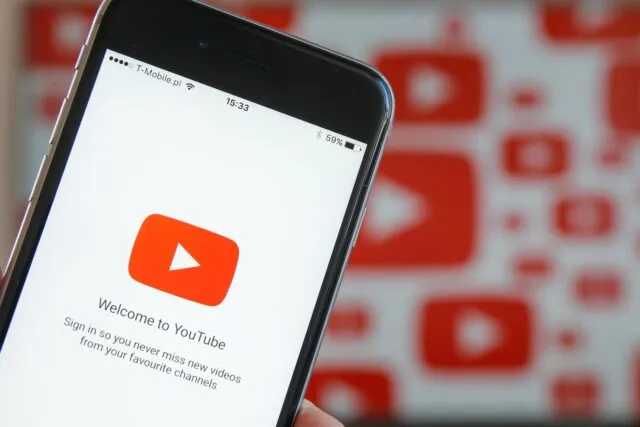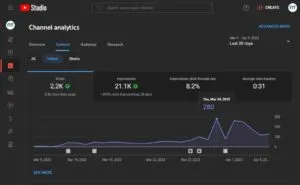YouTube has become a massive platform for content creators to share their videos with the world. As a viewer, you might wonder about your privacy while watching these videos. YouTube takes privacy seriously and has implemented various features to ensure that both viewers and creators have a sense of security. In this section, we’ll delve into how
While YouTubers can see how many views their videos receive, they do not have access to specific information about individual viewers. This means that if you're watching a video, the creator won’t know it’s you. Here are some key privacy features that YouTube has in place:
- Anonymity of Viewers: YouTube does not disclose personal information about viewers. Creators can see aggregate data but not individual identities.
- Account Privacy Settings: Users can manage their privacy settings, choosing what information they want to share publicly on their profiles.
- Incognito Mode: This feature allows users to watch videos without their history being recorded, providing an extra layer of privacy.
- Content Restrictions: YouTube allows users to flag content they find inappropriate, helping to maintain a safe viewing environment.
In summary, while YouTubers get valuable data about their audience's behavior, the specifics of who watches their videos remain private. This creates a comfortable space for viewers to engage with content freely.
Understanding YouTube Analytics

YouTube Analytics is a powerful tool for content creators, providing them with insights into their videos' performance. But what exactly does it track? It’s important to understand how this system works and what data is available to YouTubers. In this section, we will break down the key components of YouTube Analytics and what they reveal about viewer engagement.
YouTube Analytics offers a treasure trove of information that allows creators to tailor their content to better meet their audience's preferences. Here are some of the main metrics that YouTubers can track:
| Metric | Description |
|---|---|
| Views | The total number of times a video has been watched. |
| Watch Time | The total number of minutes viewers have spent watching a video. |
| Audience Retention | Shows how well a video keeps viewers engaged over time. |
| Traffic Sources | Indicates where viewers found the video (e.g., search results, suggested videos). |
| Demographics | Provides information about the age, gender, and location of viewers. |
While YouTubers can see aggregate data and trends, they still do not have access to personal information about individual viewers. This ensures that while creators can optimize their content based on general audience behavior, the privacy of each user remains intact. Understanding these analytics can help YouTubers create more engaging and resonant content without compromising viewer anonymity.
Also Read This: WWE Royal Rumble 2024 Date and Time for the Big Event
What Information YouTubers Can Access

YouTube offers content creators a wealth of information about their videos and audience through its analytics tool, YouTube Studio. This platform provides insights that help YouTubers understand their performance and audience behavior better. Here's a breakdown of some of the key data points they can access:
- Views: YouTubers can see the total number of views their videos receive, which helps gauge popularity.
- Watch Time: This metric shows how long viewers are watching their videos, indicating engagement levels.
- Demographics: Creators can access information about the age, gender, and geographic location of their viewers, allowing for targeted content creation.
- Traffic Sources: YouTubers can find out where their viewers are coming from, whether it's through search results, social media, or direct links.
- Engagement Metrics: This includes likes, dislikes, comments, and shares, which are crucial for understanding viewer interaction.
- Subscriber Changes: Creators can see how their subscriber count changes over time, along with which videos lead to gains or losses in subscribers.
This data is incredibly valuable for YouTubers as it helps them tailor their content to better meet the interests and preferences of their audience, ultimately leading to a more successful channel.
Also Read This: Write and Publish Your Ebook with Canva Ebook Templates
Limitations on Viewer Data

While YouTube provides a robust set of analytics, there are still significant limitations on the viewer data that creators can access. Understanding these limitations is crucial for YouTubers who wish to improve their content strategy. Here are some key points to consider:
- Anonymity: YouTubers cannot see the identity of individual viewers. While they can access aggregate data, personal information about who watches their videos is not available.
- Limited Real-Time Data: YouTube analytics can show data in real-time, but it is often delayed. Creators might not see immediate changes in metrics.
- Sample Sizes: For smaller channels, the data may not be statistically significant, making it hard to draw conclusions about viewer behavior.
- No Direct Interaction: Creators cannot directly communicate with viewers through analytics, limiting their ability to engage or ask for feedback.
- Privacy Regulations: YouTube adheres to privacy laws, meaning certain viewer data is protected and cannot be shared with creators.
These limitations highlight the importance of creating content that resonates broadly with audiences, rather than trying to tailor it to specific individuals. Embracing the available data while recognizing its boundaries can help YouTubers navigate their growth journey more effectively.
Also Read This: 1988 Royal Rumble Match Winner Revealed
Can YouTubers See Who Watches Their Videos
YouTube has become a major platform where content creators, commonly referred to as YouTubers, share their videos with a global audience. One question that frequently arises among creators is whether they can see who specifically watches their videos. The answer is nuanced, as YouTube provides various analytics tools, but personal viewer identification remains private.
When a YouTuber uploads a video, they gain access to YouTube Analytics, a powerful tool that offers insights into video performance and audience behavior. Here’s what YouTubers can see:
- View Count: The total number of times a video has been viewed.
- Watch Time: The total minutes viewers have spent watching the video.
- Demographics: General information about the viewers, such as age, gender, and location.
- Traffic Sources: Insights into how viewers found the video (e.g., search, suggested videos, external sites).
- Audience Retention: Data showing how long viewers stay engaged with the video.
However, it is crucial to note that YouTubers cannot see the identities of individual viewers. YouTube prioritizes user privacy, meaning that personal information such as usernames or email addresses of viewers is not disclosed to content creators. This policy ensures that user data remains confidential while still providing creators with valuable information to help them improve their content.
In summary, while YouTubers have access to various analytics that help them understand their audience and video performance, the platform maintains strict privacy controls that prevent creators from identifying individual viewers. This balance is essential for fostering a safe and secure environment for both creators and viewers.
Conclusion: Balancing Creator Insights and Viewer Privacy
In conclusion, YouTube strikes a necessary balance between providing creators with useful insights into their audience engagement while safeguarding the privacy of individual viewers, ultimately fostering a respectful and secure community for all users.